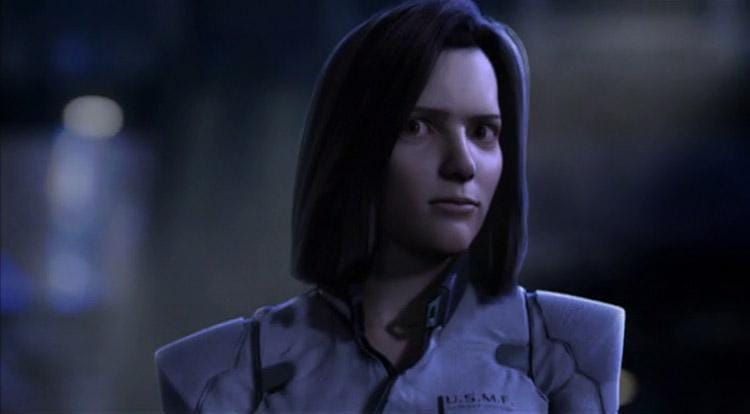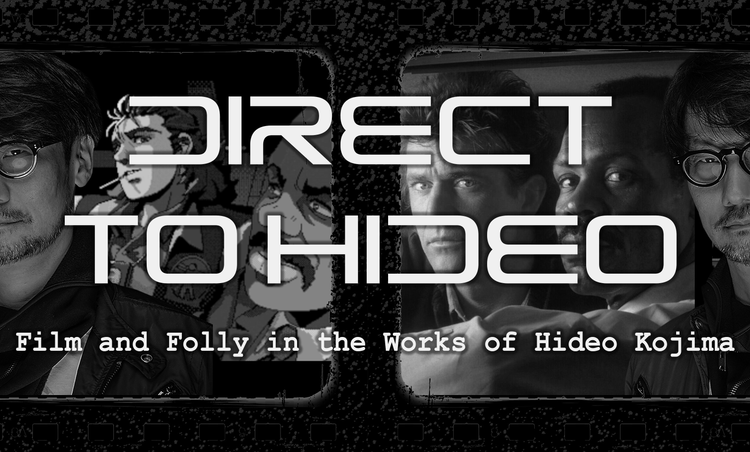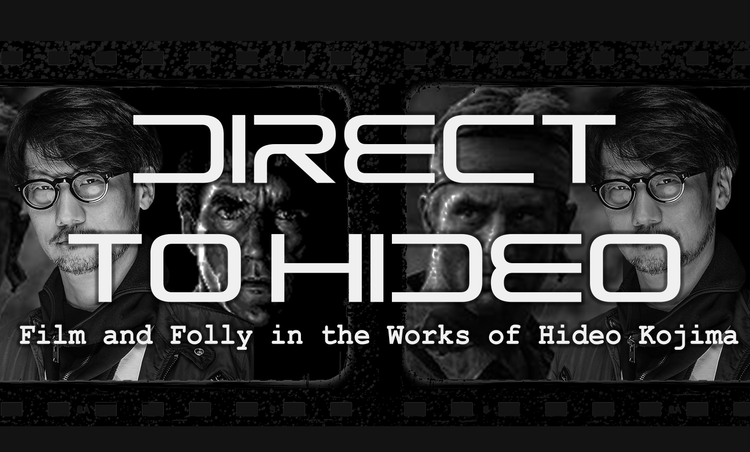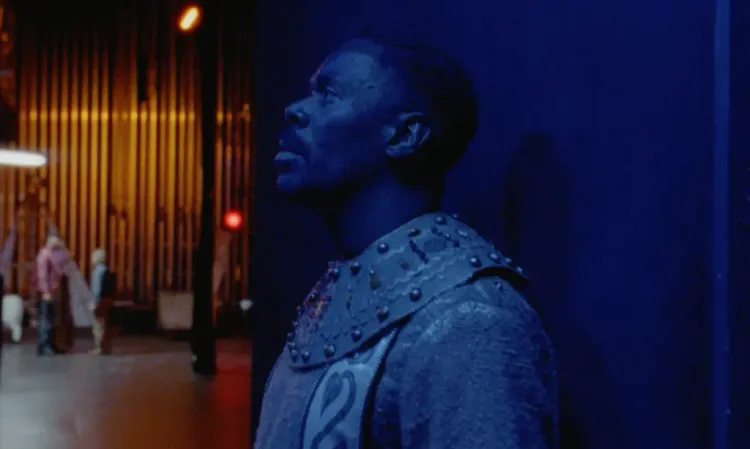Final Fantasy Rewind: A Vast Image Out of Spiritus Mundi Troubles My Sight

Hello! This entry comes much later than I would have liked, but shortly after the first installment of this week's series went live I was laid low by not-Covid that I'm still recovering from. I didn't have any other reviews on deck, so I'm only now getting the next entry out. There are two more to go, and I think I'll be spacing them about, on the order of one a week. That's a long time to focus on these ridiculous movies, but I think they have a lot to show about how cinema is treated as an ideal that other mediums get themselves into trouble with when trying to imitate and accommodate it.
I'm going to try to get some other write-ups out, especially with the Oscars coming this Sunday, but it may be something closer to last week's film diary. Two full reviews in one week is demanding more time than I can really spare, and my illness was at least somewhat a product of exhaustion, so I'll need to triage my more researched coverage for the topics I really want to dive into.
But now, onward!
Final Fantasy: The Spirits Within
(2001, dir. Hironobu Sakaguchi)
It's hard to convey just how much had changed for Squaresoft and Final Fantasy by 2001. During Legend of the Crystals' late spring Japanese release in 1994, Final Fantasy VI was released for the Super Famicom console. That title, most famous for including an in-universe opera, pushed the boundaries of what kind of storytelling could be done in games. Three years later Final Fantasy VII was released on the original Sony Playstation, sporting what were then cutting-edge 3D animated cinematics. This exponentially expanded the repertoire of narrative tools available and roughly tripled its audience. It was a meteoric, medium-defining smash that gave Square the confidence and resources to dream bigger. Final Fantasy VIII, released in 1999 and selling two million copies on its first day in Japan alone, boasted a far more realistic art style in contrast to VII's crude, blocky figures. FFIX followed a year later, with FFX to arrive on Sony's new Playstation 2 a year after that. The series had become synonymous with emotionally resonant storytelling and spectacle to rival cinematic blockbusters, and so it made a certain amount of sense that it should try to beat Hollywood at its own game and bring Final Fantasy to actual cinemas.
To this end Squaresoft opened a new film division, Square Pictures, with Final Fantasy: The Spirits Within, directed by series creator Hironobu Sakaguchi, to be its first project. This would not be a live-action adaptation like the previous year's failed Dungeons and Dragons, however, nor would it be a 3D cartoon like 1999's Toy Story 2, Pixar's most recent release in mid-2001. Square was on the vanguard of realistic CG animation and were going to push the technology into new frontiers; first by making the first 3D film with photorealistic characters, and then using them to make others. They positioned protagonist Aki Ross as a digital "actress" that would be used in subsequent movies, and cemented the blend of digital and real worlds with a promotional Aki swimsuit pinup for Maxim, which declared her #87 of the top 100 hottest women of 2001. On its July 2 premiere, after four years in production, The Spirits Within was poised to revolutionize filmmaking as we knew it.
That did not happen.
The movie's problems begin even before the movie proper, with the logo for Square Pictures—which uses a rectangle. It's a synecdoche for the entire enterprise: a reference to an object, represented by something that is recognizably not that. Final Fantasy: The Spirits Within desperately wants to be taken seriously as a real movie, a stirring, exciting, epic drama, one whose animation could convince the audience of the spirits within its characters as much as the spirits within ourselves. Yet its characters and story are rarely convincing, and their fleeting passability makes them feel all the more wrong.
It's 2065, decades after a meteor collided with Earth and unleashed a managerie of incorporeal translucent Phantoms that kill by pulling a person's spirit from their body. The Phantoms have decimated the human population, which has retreated into cities walled off by shields powered by a kind of spirit energy that is also used as firepower. The creator of this technology, Dr. Sid (voiced by Donald Sutherland) believes he's found the key to humanity's survival: eight life forms with unique spiritual energies that can be harnessed to create an opposite energy to the Phantoms and cancel them out entirely.
We enter with Sid's protege, Dr. Aki Ross (Ming Na Wen), searching for the sixth of these lifeforms while also suffering from increasingly frequent dreams about the Phantoms and their world. She is saved from a Phantom attack in Old New York City by the Deep Eyes military unit, headed by Aki's former lover, Captain Gray Edwards (Alec Baldwin). Aki and Sid take their theory to (New) New York's leadership council, but are opposed by the belligerent General Hein (James Woods), who wants to use an orbital weapon, the Zeus Cannon, to destroy the meteor and the Phantoms. Sid and Aki are convinced that the Earth itself has a spirit, Gaia, and such a weapon could fatally harm it, and so they set out to find the remaining spirits before it's too late.
There's nothing outright bad about the story itself, conceived by Sakaguchi but with a screenplay written by Al Reinert (Apollo 13) and Jeff Vintar (uhhhh), but it is painfully cliched, cribbing most shamelessly from Aliens, especially with the Vasquez-Hudson dynamic between Deep Eyes members Jane (Peri Gilpin) and Neil (Steve Buscemi). The roteness puts a floor on the quality, but that makes the script baldly functional at best. At worst it constantly trips over itself with dialogue that is either inhumanly trite or getting lost in the weeds on its invented science of spirits and phantoms. Imagine all of Star Wars: Episode 1 was about midichlorians, and you get an idea of the narrative death this entails. (Phantom menaces are just a cursed subject for film, it seems.) The poor actors try to make this work, but their lines all feel like placeholders. Wen has the most bad dialogue by volume, having to shoulder most of the spiritual technobabble, but Steve Buscemi gets the worst of it, trying to sell barely-there sarcasm as quippy comic relief, the failure of which compounds with how stiffly his digital avatar moves at times.
Ay, the photo-real characters. The newest technology will always be the quickest to age, and to the artists' credit some character models, particularly Aki and Sid's, still look passable in stills. In motion, however, they absolutely plunge into the uncanny valley. Skin does not absorb and reflect light, fabric is stiff, and facial movements are too rubbery. Without the exagerrated designs and movements that animators can normally rely on, there's a constant disconnect between the naturalist-inflected performances from the vocal recording booth, and the mo-capped body movements and hand-animated expressions. This problem would be solved less than 18 months later, with Andy Serkis's live-captured performance as Gollum in The Two Towers, but for now Square would have to make do with mere automata.
For all the failures of The Spirits Within, however, there remain real accomplishments. The machinery and Phantoms are well-designed and rendered. The environments are excellent, especially with the more varied locales in the back end—a collapsing futuristic city, a hole in the earth where two Gaia spirits mingle. Moreover the movie is held together entirely due to Elliot Goldenthal's brilliant orchestral score, an emotionally avant garde mix of dark, menacing brass and a tender piano-based variation on Lara Fabian's obligatory credits ballad "The Dream Within" that emphasizes and embodies the movie's themes of finding life in the lifeless. There are isolated moments that work; I'm fond of the the death of Jane, the Vasquez-type marine, where dozens of phantom tendrils snake into view behind her and she stops shooting and turns off her comm link and accepts her fate. There ultimately just is not enough for the movie as a whole to come together.
It's not like this concept couldn't succeed, though maybe 2001 just wasn't the time for it. Spirits Within feels like a prototype for the original Avatar, another eco-conscious techno fable about protecting the living spirit of the planet, told with immersive, lifelike CGI and plundering from the James Cameron school of filmmaking (only Avatar was done by the master himself). Both Avatar and its sequel got a lot of side-eye for their corny cliches, but comparing them to The Spirits Within is instructive. Tropes are not inherently bad; they can be leveraged either as shorthand to guide the audience's reaction, or a heavy hand to pound it into to them. That can make the difference between two of the highest-grossing movies ever made, and one of the biggest bombs in cinematic history.
The Spirits Within grossed only $85 million against its $137 million budget, but that undersells just how disastrous it was. Square Pictures only contributed a short film to the Animatrix anthology before shutting down its $18-million-per-year Honolulu studio. The financial damage was bad enough to delay parent company Squaresoft's pending merger with rival game development studio Enix, which had been in discussion in 2000 but only went through in 2003. Sakaguchi wound down his responsibilities with Square and left the company that same year.
The movie made nobody happy. Critics attacked the story and the dead-eyed characters. General audiences stayed away, and the Final Fantasy faithful groused that their beloved series had been rendered unrecognizable, with none of the iconography they had come to love. I, who was enough of a nerd that I had replayed FFVII in order to see a hard-to-unlock sequence where your hero goes on a date with a man rather than one of his three female party compansions—I was in the theater on opening day and convinced myself that the movie was good, but that feeling didn't last even a year. The Fellowship of the Ring came out that December, and my immediate response was that it felt like the Final Fantasy movie we never got.
Yet this is somewhat unfair; looking just a little deeper, the spirit of the games, as it were, remains intact. Aki's search for eight compatible spirits is similar to the 'gather the four crystals' kind of quests the earlier games had. The story's cycle of life mysticism picks up right where Final Fantasy VII and its 'the Lifestream is the blood of the Planet we all return to' themes left off, and the climax, taking place in the crater of a meteor impact no less, uses a lot of that game's imagery. Hironobu Sakaguchi's personal stamp is clearly felt in the story's earnestness, right down to naming Aki after his mother, whose death in a car accident shaped not only this movie's themes of life and death but VII's as well. Final Fantasy: The Spirits Within as a narrative is about such dualities, of life and death as well as the physical and the spiritual. As a movie it circles a different dyad, of hackneyed storytelling with reckless forward-thinking ambition. It just happened to land on the losing side. Square Enix would learn the wrong lessons here, and resolve never to fail so spectacularly again. Their next attempt to bring Final Fantasy to cinematic life would be true to the letter, but not the spirit.





Member discussion